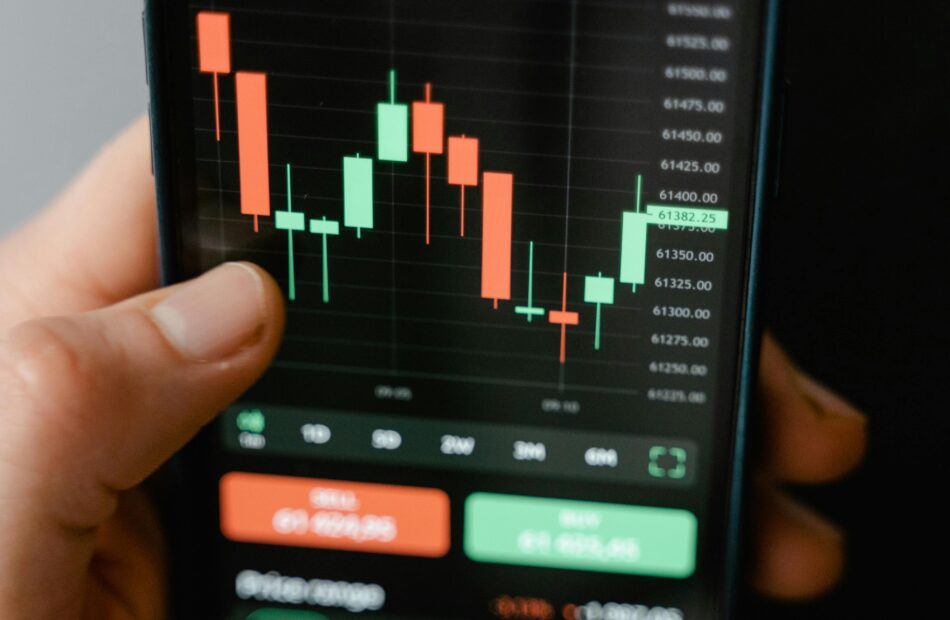Coinbase Institutional files for XRP futures trading with CFTC
US crypto exchange Coinbase has filed with the US Commodity Futures Trading Commission (CFTC) to launch futures contracts for Ripple’s XRP token.“We’re excited to announce that Coinbase Derivatives has filed with the CFTC to self-certify XRP futures — bringing a regulated, capital-efficient way to gain exposure to one of the most liquid digital assets,” stated Coinbase Institutional on April 3. The firm added that it anticipates the contract going live on April 21.According to the certification filing, the XRP (XRP) futures contract will be a monthly cash-settled and margined contract trading under the symbol XRL.The contract tracks XRP’s price and is settled in US dollars. Each contract represents 10,000 XRP, currently worth about $20,000 at $2 per token.Contracts can be traded for the current month and two months ahead, and trading will be paused as a safety measure if spot XRP prices move more than 10% in an hour. “The exchange has spoken with FCMs (Futures Commission Merchants) and market participants who support the decision to launch a XRP contract,” the firm stated. Coinbase is not the first to launch XRP futures in the United States. In March, Chicago-based crypto exchange Bitnomial announced the launch of the “first-ever CFTC-regulated XRP futures in the US.” XRP futures trading is available on many of the world’s leading centralized crypto exchanges, such as Binance, OKX, Bybit and BitMEX. Funding rates remain negativeIn late March, Cointelegraph reported that XRP derivatives’ funding rates had flipped negative as investor sentiment turned bearish. Related: XRP funding rate flips negative — Will smart traders flip long or short?Funding rates are periodic payments between traders in perpetual futures markets that help keep the futures price aligned with the spot price. Positive funding rates mean that long traders (buyers) pay short traders, while negative funding rates mean short traders (sellers) pay long traders. When funding rates go negative, it means short traders are willing to pay a premium to maintain their positions, indicating strong conviction from bearish derivatives traders. XRP funding rates remained negative on major derivatives exchanges as of April 4, according to CoinGlass. XRP OI-weighted funding rates. Source: CoinGlassMagazine: XRP win leaves Ripple a ‘bad actor’ with no crypto legal precedent set
Gemini to open Miami office after judge stays SEC case
The cryptocurrency exchange Gemini, backed by Cameron and Tyler Winklevoss, plans to move into a Miami-area office space, as US Securities and Exchange Commission (SEC) enforcement case may have reached its end.According to a March 31 post from Sterling Bay Properties, Gemini signed a lease for an office in Miami’s Wynwood Art District. The move would expand the exchange’s offices from Europe and New York to Florida, where some crypto companies are headquartered.Bloomberg reported Gemini was expected to move into the Miami office by May. Cointelegraph reached out to the exchange for comment but did not receive a response at the time of publication.Wrapping up regulatory issues?The move to Florida came amid a federal judge ordering a 60-day stay on the SEC’s lawsuit against Gemini Global Capital “to allow the parties to explore a potential resolution.” The enforcement action, filed in January 2023, alleges the crypto firm offered and sold unregistered securities through its Gemini Earn program. Cameron Winklevoss said in February that the regulator had closed an investigation into a separate matter involving Gemini. The firm also agreed in January to a $5 million penalty imposed by the US Commodity Futures Trading Commission over alleged “false and misleading” statements related to its 2017 bid to offer Bitcoin (BTC) futures contracts.Related: Crypto PAC-backed Republicans win US House seats in Florida special electionsGemini reportedly filed confidentially for an initial public offering (IPO) earlier this year. The exchange may have pursued an IPO as early as 2021 before shares of many US-based crypto firms were publicly traded. Several crypto firms have regional offices in Miami, possibly due to Florida’s seemingly favorable regulatory environment and the lack of state income tax for residents. Ripple Labs has an office in the Wynwood neighborhood, not far from Gemini’s future location, and BTC miner MARA Holdings is headquartered in Fort Lauderdale.Magazine: Crypto City: The ultimate guide to Miami
Most opportune time to buy Bitcoin? Now — Bitwise CIO Matt Hougan explains why
Are you considering investing in Bitcoin (BTC) but unsure of the right time to do so? Look no further than our latest interview with Bitwise’s chief investment officer, Matt Hougan. In this in-depth analysis, Hougan explains why now is the most opportune time to buy Bitcoin from a risk-adjusted perspective.
Hougan starts by acknowledging the uncertainties surrounding Bitcoin in its early days, such as technology risks, regulatory threats, trading inefficiencies, and reputational concerns. However, he argues that these risks have significantly diminished over time. With the launch of Bitcoin ETFs, adoption by major institutional investors, and even the US government’s strategic Bitcoin reserve, Bitcoin has solidified its place in the global financial ecosystem.
According to Hougan, Bitcoin’s current market cap is only 10% of gold’s, and to match gold’s value, Bitcoin would have to increase tenfold. But that’s just the beginning. Hougan believes that Bitcoin has even more long-term potential, and institutional adoption is about to accelerate. He also points out that market fundamentals, such as limited new supply and increasing demand, could push Bitcoin to new heights.
Don’t just take our word for it, watch the full interview with Matt Hougan on our YouTube channel and subscribe for more insightful content. Hougan’s analysis is a must-watch for anyone considering investing in Bitcoin. With his expertise and knowledge, he provides a compelling argument for why now is the best time to buy Bitcoin.
So, what are you waiting for? Head over to our YouTube channel and watch the full interview now. And while you’re there, don’t forget to subscribe for more market insights and updates. With Bitcoin’s potential for growth and increasing institutional adoption, there’s no better time to invest in this digital asset. Don’t miss out on this opportunity to be a part of the future of finance.
$2B lost to crypto hacks in Q1 2025, $1.63B from access control flaws
Over $2 billion was lost to cryptocurrency hacks in the first quarter of 2025.According to a report shared with Cointelegraph by crypto cybersecurity firm Hacken, in Q1 2025, nearly $1.63 billion was lost just to access control exploits. Anmol Jain, vice president of investigations at crypto forensics firm AMLBot, told Cointelegraph that the exceptionally high figure is mainly attributable to the recent hack of the crypto exchange Bybit.The data is similar to that recently shared by crypto cybersecurity firm PeckShield. The competing firm’s report — which excludes scams — suggested that crypto hacks total at $1.6 billion in Q1 2025.Total 2025 Q1 crypto hack losses by category. Source: HackenLate February reports indicate that the North Korean hackers behind the $1.4 billion Bybit hack control over 11,000 cryptocurrency wallets used to launder stolen funds. The increasing participation of North Korean state actors highlights increasing sophistication and scale.This hack had a significant impact on this quarter’s figures. This is particularly clear when one considers that the entirety of 2024 saw a total loss of $2.25 billion. Hacken shared a key lesson on the subject:“Securing digital assets requires more than just secure on-chain code — the entire infrastructure, from front-end interfaces to internal processes, must be equally hardened, as all it takes is a single weak spot to wreck the entire system.“No one is safeHacken’s report highlighted that the past few months saw “even the biggest centralized and decentralized players falling victim to operational failures, access control weaknesses, and in a few cases, social engineering.” The quarter did not see any notable new exploits, “but rather the continued effectiveness of existing attack vectors.”The report further highlights that, while smart contract vulnerabilities remain an issue, “most damage is now caused by failures in people, processes, or permission systems.” This is also reportedly the third quarter in a row that has seen the top exploit be a multisignature wallet-related hack.The ByBit hackers compromised the Safe{Wallet} front end. Previous hacks involving multisignature wallet implementations or management include the Radiant Capital hack in Q4 2024 and the WazirX hack in Q3 2024.The crypto scam industryScams also resulted in large-scale damage, with Hacken data attributing $96.37 million of losses to phishing scams and $300 million to rug pulls. Jain also highlighted a troubling trend in crypto scams becoming an industry:“The most worrying trend is the professionalization of scam networks, where criminals operate with startup-like efficiency, including ‘training programs’ for scammers, internal quotas, and multi-stage laundering schemes using platforms like Huione Pay.“The statement follows mid-January reports that Huione, often described as”“the largest online illicit marketplace to have ever operated”” highlighted that the service has seen its monthly inflows increase by 51% in just half a year. This growth followed the platform’s deployment of its USD-pegged stablecoin and financial services dedicated to illegal activities.Anmol highlighted that “most pig butchering scams originate from Southeast Asian cybercrime compounds,” with many being located in Cambodia, Myanmar and Laos, with some presence in Thailand. The operators also often “employ” human trafficked young people from India, Nepal, Vietnam, and the Philippines.Magazine: China’s ‘point running’ crypto scams, pig butchers kidnap kids: Asia Express
Circle officially files for Initial Public Offering with SEC
Circle Internet Group, the issuer of the popular stablecoin USD Coin (USDC), has officially filed for an initial public offering (IPO) with the US Securities and Exchange Commission (SEC). The filing, made on April 1, reveals that Circle plans to list its Class A common stock on the New York Stock Exchange under the symbol “CRCL.”
The IPO filing does not disclose the number of shares to be offered or the target price, but it does provide insight into Circle’s financials. According to the filing, the company generated $1.67 billion in revenue in 2020, a 16% increase from the previous year. However, its EBIDTA (Earnings before Interest, Tax, Depreciation, and Amortization) fell by 29% to $284.8 million.
This move marks a significant milestone for Circle, which was founded in 2013 and has since become one of the leading players in the digital currency space. The company has raised over $400 million in funding from top investors, including Goldman Sachs and Baidu.
Circle’s decision to go public comes at a time when the cryptocurrency market is experiencing a surge in interest and adoption. The company’s flagship stablecoin, USDC, has seen a significant increase in demand, with its market cap reaching over $11 billion in March 2021.
The IPO filing also includes a statement from Circle’s CEO and co-founder, Jeremy Allaire, who said, “We believe that becoming a public company will enhance our ability to drive innovation and growth in the digital currency and blockchain industry.”
This news has sparked excitement and speculation among investors and industry experts, with many predicting that Circle’s IPO will have a positive impact on the overall cryptocurrency market. It also highlights the growing mainstream acceptance and recognition of digital currencies as a legitimate asset class.
As this is a developing story, more information will be added as it becomes available. In the meantime, investors and crypto enthusiasts will be eagerly awaiting Circle’s IPO and its potential impact on the industry.
Ethereum prints 4 consecutive red monthly candles, but data points to an ETH/BTC bottom
Ethereum’s native token, Ether (ETH), registered four consecutive red monthly candles after the altcoin dropped 18.47% in March. The altcoin’s current market structure reflects a sustained bearish trend not seen since the bear market of 2022. With each monthly close taking place below the previous month’s low, analysts are beginning the debate about whether ETH is approaching a bottom or if there is more downside ahead for the altcoin. Ethereum/Bitcoin ratio hits new 5-year lowOn March 30, the Ethereum/Bitcoin ratio dropped to a five-year low of 0.021. The ETH/BTC ratio measures ETH’s value against Bitcoin (BTC), and the current decline underlines Ether’s underperformance against Bitcoin over the past five years. In fact, the last time the ETH/BTC ratio dipped to 0.021, ETH was valued between $150-$300 in May 2020. Ethereum/Bitcoin 1-month chart. Source: Cointelegraph/TradingViewData from the token terminal showed Ethereum’s monthly fees dropped to $22 million in March 20205, its lowest level since June 2020, indicating low network activity and market interest. Ethereum fees represent the cost users pay for transactions, which is influenced by network demand. When network fees begin to drop, it indicates reduced network utility. Ethereum fees and price. Source: token terminalDespite the price action and revenue malaise, Ethereum analyst VentureFounder said that the ETH/BTC bottom could occur over the next few weeks. The analyst hinted at a potential bottom between 0.017 and 0.022, suggesting that the ratio might drop further before a recovery. The analyst said, “Maybe another lower low RSI and one more push downward lots of similarity with 2018-2019 Fed tightening & QE cycle, expecting the first higher high after May FOMC when Fed ends QT & begin QE.”Ethereum/Bitcoin analysis by venture founder. Source: X.comRelated: Ethereum price down almost 50% since Eric Trump’s ‘add ETH’ endorsementHistorical odds favor a short-term bottomSince its inception, ETH has registered three or more consecutive bearish monthly candles on five occasions, and each time, a short-term bottom was the result. The chart below shows that the most back-to-back red months occurred in 2018, with seven, but prices jumped 83% after the correction. Ethereum monthly chart. Source: Cointelegraph/TradingViewIn 2022, after three consecutive bearish months, ETH price consolidated in a range for almost a year, but the bottom was in on the third bearish candle in June 2022. Historically, Ethereum has a 75% probability of having a green month in April. Based on Ethereum’s past quarterly returns, the altcoin experienced the least number of drawdowns in Q2 compared to other quarters. With the average returns in Q2 as high as 60.59%, the likelihood of positive returns in April. Ethereum Quarterly returns. Source: CoinGlassRelated: Why is Ethereum (ETH) price up today?This article does not contain investment advice or recommendations. Every investment and trading move involves risk, and readers should conduct their own research when making a decision.
US lawmaker will reintroduce crypto retirement bill to help Trump agenda
Senator Tommy Tuberville of Alabama is making headlines once again with his plans to reintroduce a bill that would allow Americans to add cryptocurrency to their retirement savings plans. This is not the first time the senator has attempted to push this legislation through Congress, with previous attempts in 2022 and 2023 falling short. However, with the growing popularity and acceptance of cryptocurrency, Tuberville is determined to see his “Financial Freedoms Act” come to fruition.
In a recent interview with Fox News, Senator Tuberville stated that he plans to reintroduce the bill after two failed attempts. He also mentioned his desire to support President Donald Trump’s perceived role as a “crypto president.” The senator believes that by giving Americans the opportunity to invest in cryptocurrency, it will allow them to have more control over their finances and potentially see greater returns.
The Financial Freedom Act, which was first introduced in the US Senate in 2022, aims to reduce regulations with the Department of Labor regarding the types of investments allowed in 401(k) retirement plans. This would give individuals more freedom to choose how they want to invest their money for their retirement. While the bill was initially set to be reintroduced on April 1, there has been no movement on it as of yet.
This news comes at a time when cryptocurrency is gaining more mainstream attention and acceptance. With major companies like Tesla and PayPal now accepting cryptocurrency as a form of payment, it’s clear that the industry is here to stay. However, there are still concerns and uncertainties surrounding the regulation of cryptocurrency, which is why Tuberville’s bill could be a step in the right direction.
In related news, the Trump administration’s involvement in cryptocurrency ventures has raised questions about the future of stablecoin policy in the US. As this is a developing story, more information will be added as it becomes available. In the meantime, Senator Tuberville’s bill is something to keep an eye on for those interested in the intersection of cryptocurrency and retirement savings.
Hyperliquid DEX trading volumes cut into CEX market share: Data
Hyperliquid is one of the current bull market’s standout DeFi success stories. With daily trading volumes having reached $4 billion, the exchange has become the largest decentralized (DEX) derivatives platform, commanding nearly 60% of the market.Hyperliquid still lags far behind Binance Futures’ $50 billion daily average volume, but the trend suggests that it has started to encroach on centralized exchange (CEX) territory.What’s behind Hyperliquid’s parabolic rise?Launched in 2023, Hyperliquid gained popularity in April 2024 after launching spot trading. This, combined with its aggressive listing strategy and easy-to-use onchain user interface, helped to lure in a wave of new users.The platform’s real explosion, however, came in November 2024, following the launch of its HYPE (HYPE) token. Hyperliquid’s trading volume skyrocketed, and it now boasts over 400,000 users and more than 50 billion trades processed, according to data from Dune.Hyperliquid cumulative trades and users. Source: DuneWhile Hyperliquid started as a high-performance perpetual futures and spot DEX, its ambitions have since expanded. With the launch of HyperEVM on Feb. 18, the project has become a general-purpose layer-1 chain capable of supporting third-party DeFi apps built on top of its infrastructure. As one of Hyperliquid’s founders, Jeff Yan, put it, “Most L1s build infrastructure and hope that others will come build the killer apps. Hyperliquid takes the opposite approach: polish a native application and then grow into general-purpose infrastructure.”If this approach works, the liquidity driven by Hyperliquid’s core DEX could naturally feed into the broader ecosystem and vice versa, creating a flywheel effect.Related: Hyperliquid flips Solana in fees, but is the ‘HYPE’ justified?Will Hyperliquid become a sustainable CEX alternative?According to CoinGecko, Hyperliquid now ranks 14th among derivatives exchanges by open interest, sitting at $3.1 billion. That’s still behind Binance’s $22 billion but ahead of older names like Deribit or derivatives divisions of Crypto.com, BitMEX, or KuCoin. It’s the first time a DEX is competing so closely with established CEXs.Furthermore, as Hyperliquid deepens its focus on specialized trading pairs, it continues to chip away at the market share of major exchanges. The DEX accepts not only Arbitrum USDC as collateral but also native BTC. This makes it one of the few decentralized platforms that handle BTC wrapping and unwrapping natively, giving users the option to use BTC for Web3-wallet-based trading.X user Skewga.hl noted that Hyperliquid’s BTC perpetual futures volume share recently hit an all-time high, reaching almost 50% of Bybit’s and 21% of Binance’s. Skewga.hl wrote,“No DEX has ever come this close to matching Tier 1 CEX volume.” Daily volume ratios, Hyperliquid vs Other exchanges (BTC perp). Source: Skewga.hlSince 2024, perpetual swaps have seen a revival as a trading tool. During the 2021–2022 bull market, daily perps volume averaged around $5 billion. In early 2025, that number often exceeded $15 billion, with Hyperliquid accounting for nearly two-thirds of it.Data from DefiLlama illustrates the shift: while dYdX (green) dominated in 2023–2024, the landscape diversified significantly in 2024—and by 2025, Hyperliquid (pink) had taken the lead.Perps volume breakdown. Source: DefiLlamaDespite the recent JELLY token scandal, which involved the exchange halting trading and delisting a low-market-cap token that a whale had exploited, Hyperliquid remains a popular exchange among DeFi and DEX traders. It has yet to capture institutional investor flows or scale to the level of top-tier CEXs. However, if its layer 1 ecosystem gains traction with developers, Hyperliquid could evolve into more than just a leading DEX.This article does not contain investment advice or recommendations. Every investment and trading move involves risk, and readers should conduct their own research when making a decision.
Crypto PAC-supported candidates make a final push to Florida voters
Two Republican candidates supported by at least a combined $1.5 million in media spending from a cryptocurrency-backed political action committee (PAC) are making final pleas to voters turning out for special elections in Florida congressional districts.On April 1, voters in Florida’s 1st and 6th congressional districts will head to the polls to decide whether to keep Republican representatives or hand over control to Democrats for the first time in roughly 30 years. The Defend American Jobs PAC — an affiliate of Fairshake, which poured more than $131 million in the 2024 US election cycle — has spent a combined $1.5 million on media for Republicans Jimmy Patronis and Randy Fine, running against Democrats Gay Valimont and Josh Weil, respectively.Source: Gay Valimont for CongressThough the Florida congressional districts have historically favored Republican candidates, Democrats Valimont and Weil both raised significantly more than Patronis and Fine as of March — a reported roughly $6.5 million and $10 million against the Republicans’ $1 million and $1 million, respectively. These amounts do not reflect the media buys from PACs like Defend American Jobs or Tesla CEO Elon Musk’s America PAC, which spent more than $20,000 for texting services in the two congressional elections.As of March 31, there were four vacancies for seats in the US House of Representatives following two Democratic lawmakers passing away and two Republicans resigning in anticipation of positions with the Trump administration. If Democrats were to keep their existing two seats and flip the two in Florida, Republicans’ majority in the chamber would narrow to 217 to 218 — not changing majority control, but likely influencing how the House would consider legislation and policy.Among the crypto-related legislation being considered in Congress included a market structure bill and stablecoin regulation. Some lawmakers have suggested that they intended to get both bills passed before Congress goes on recess in August.Related: Florida bill proposes strict rules against online gamblingMichigan Representative Shri Thanedar, a Democrat who described himself as largely self-funded and may have benefitted from crypto-backed PAC money in his 2024 race, spoke to Cointelegraph on March 27 about the role the industry could have on future elections. Protect Progress — another Fairshake-affiliated PAC — spent more than $1 million on a media buy to support the Michigan representative in his August 2024 primary. He defeated Republican Martell Bivings in November with 68% of the vote.“I was surprised to see those ads,” Rep. Thanedar told Cointelegraph, referring to Protect Progress’ media outreach. “I was not aware that such an ad would be appearing in support of my campaign.”The Michigan lawmaker added:“Crypto is not unique to this. There are multiple industries […] that have PACs and Super PACs and independent expenditures. All of that money, the dark money in our politics, has to go. As long as we have the dark money in politics, that is going to impact our politicians.” Looking to the 2026 midtermsAfter many Democratic and Republican candidates espousing “pro-crypto” views won in the 2024 elections, Fairshake spokesperson Josh Vlasto said the PAC was “keeping [its] foot on the gas” in the future. Major firms like Coinbase and Ripple Labs have contributed tens of millions of dollars to the PAC.As of January, Fairshake reported holding more than $116 million to spend on candidates in 2025 and 2026. Vlasto declined to comment on the April 1 special elections but said after the January primaries, the PAC was “proud to support [Patronis and Fine] with TV ad campaigns.” Magazine: Trump’s crypto ventures raise conflict of interest, insider trading questions
Trump’s focus on cartels highlights new risks for digital assets
Opinion by: Genny Ngai and Will Roth of Morrison Cohen LLPSince taking office, the Trump administration has designated several drug and violent cartels as Foreign Terrorist Organizations (FTOs) and Specially Designated Global Terrorists (SDGTs). US President Donald Trump has also called for the “total elimination” of these cartels and the like. These executive directives are not good developments for the cryptocurrency industry. On their face, these mandates appear focused only on criminal cartels. Make no mistake: These executive actions will cause unforeseen collateral damage to the digital asset community. Crypto actors, including software developers and investors, may very well get caught in the crosshairs of aggressive anti-terrorism prosecutions and follow-on civil lawsuits.Increased threat of criminal anti-terrorism investigations The biggest threat stemming from Trump’s executive order on cartels is the Department of Justice (DOJ). Almost immediately after President Trump called for the designation of cartels as terrorists, the DOJ issued a memo directing federal prosecutors to use “the most serious and broad charges,” including anti-terrorism charges, against cartels and transnational criminal organizations.This is a new and serious development for prosecutors. Now that cartels are designated as terrorist organizations, prosecutors can go beyond the traditional drug and money-laundering statutes and rely on criminal anti-terrorism statutes like 18 U.S.C. § 2339B — the material-support statute — to investigate cartels and anyone who they believe “knowingly provides material support or resources” to the designated cartels. Why should the crypto industry be concerned with these developments? Because “material support or resources” is not just limited to providing physical weapons to terrorists. “Material support or resources” is broadly defined as “any property, tangible or intangible, or service.” Anyone who knowingly provides anything of value to a designated cartel could now conceivably violate § 2339B. Even though cryptocurrency platforms are not financial institutions and never take custody of users’ assets, aggressive prosecutors may take the hardline view that software developers who design crypto platforms — and those who fund these protocols — are providing “material support or resources” to terrorists and launch harmful investigations against them.This is not some abstract possibility. The government has already demonstrated a willingness to take this aggressive position against the crypto industry. For example, the DOJ indicted the developers of the blockchain-based software protocol Tornado Cash on money laundering and sanction charges and accused them of operating a large-scale money laundering operation that laundered at least $1 billion in criminal proceeds for cybercriminals, including a sanctioned North Korean hacking group.Recent: Crypto crime in 2024 likely exceeded $51B, far higher than reported: ChainalysisMoreover, the government already believes that cartels use cryptocurrency to launder drug proceeds and has brought numerous cases charging individuals for laundering drug proceeds through cryptocurrency on behalf of Mexican and Colombian drug cartels. TRM Labs, a blockchain intelligence company that helps detect crypto crime, has even identified how the Sinaloa drug cartel — a recently designated FTO/SDGT — has used cryptocurrency platforms to launder drug proceeds.The digital asset community faces real risks here. Putting aside the reputational damage and costs that come from defending criminal anti-terrorism investigations, violations of § 2339B impose a statutory maximum term of imprisonment of 20 years (or life if a death occurred) and monetary penalties. Anti-terrorism statutes also have extraterritorial reach, so crypto companies outside the US are not immune to investigation or prosecution.Civil anti-terrorism lawsuits will escalate The designation of cartels as FTOs/SDGTs will also increase the rate at which crypto companies will be sued under the Anti-Terrorism Act (ATA). Under the ATA, private citizens, or their representatives, can sue terrorists for their injuries, and anyone “who aids and abets, by knowingly providing substantial assistance, or who conspires with the person who committed such an act of international terrorism.” Aggressive plaintiffs’ counsel have already relied on the ATA to sue cryptocurrency companies in court. After Binance and its founder pled guilty to criminal charges in late 2023, US victims of the Oct. 7 Hamas attack in Israel sued Binance and its founder under the ATA, alleging that the defendants knowingly provided a “mechanism for Hamas and other terrorist groups to raise funds and transact illicit business in support of terrorist activities” and that Binance processed nearly $60 million in crypto transactions for these terrorists. The defendants filed a motion to dismiss the complaint, which was granted in part and denied in part. For now, the district court permits the Ranaan plaintiffs to proceed against Binance with their aiding-and-abetting theory. Crypto companies should expect to see more ATA lawsuits now that drug cartels are on the official terrorist list. Vigilance is key Crypto companies may think that Trump’s war against cartels has nothing to do with them. The reality is, however, that the effects of this war will be widespread, and crypto companies may be unwittingly drawn into the crossfire. Now is not the time for the digital asset community to relax internal compliance measures. With anti-terrorism statutes in play, crypto companies must ensure that transactions with all FTOs/SDGTs are identified and blocked, monitor for new terrorist designations, and understand areas of new geographical risks.Opinion by: Genny Ngai and Will Roth of Morrison Cohen LLP. This article is for general information purposes and is not intended to be and should not be taken as legal or investment advice. The views, thoughts, and opinions expressed here are the author’s alone and do not necessarily reflect or represent the views and opinions of Cointelegraph.










